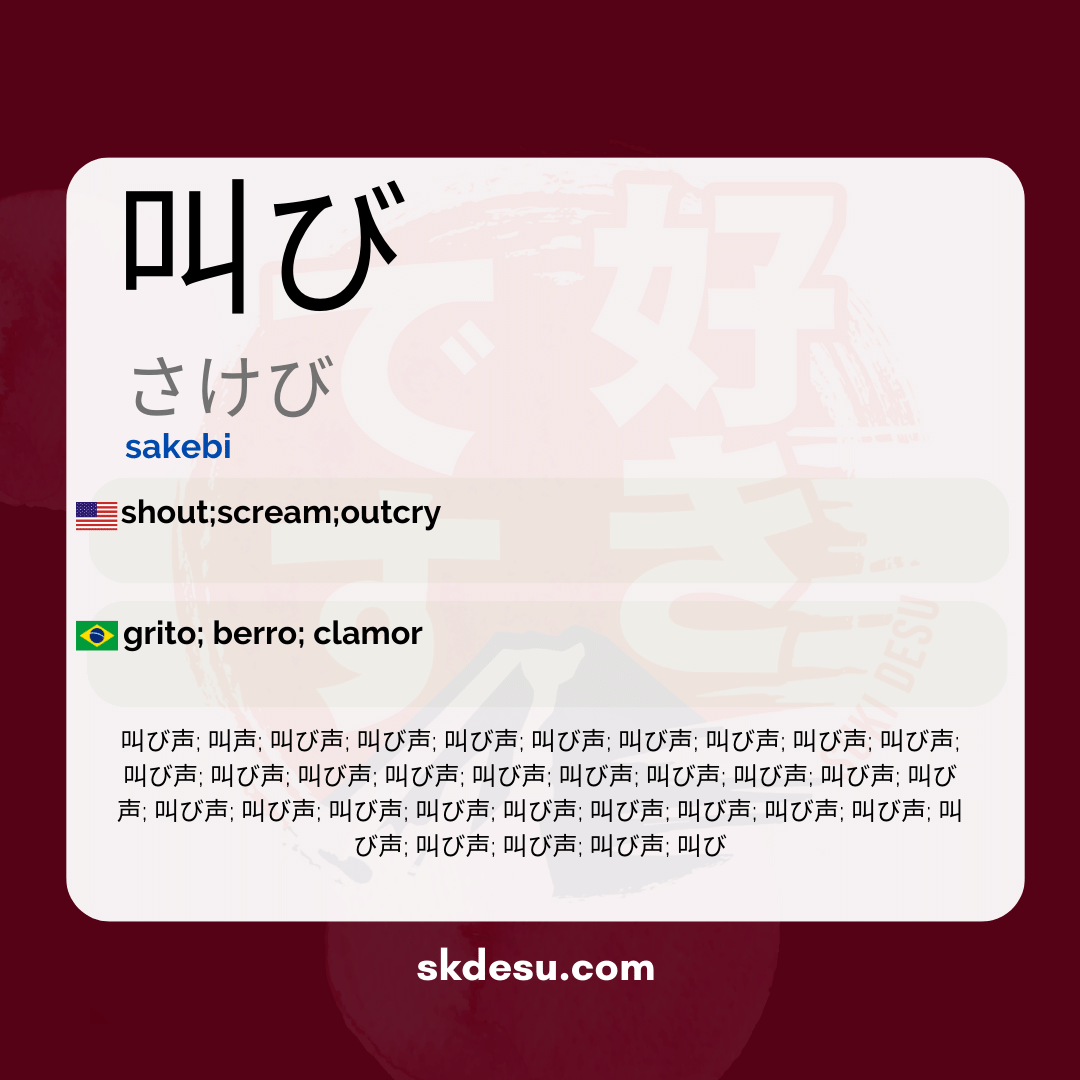Translation and Meaning of: 叫び - sakebi
The Japanese word 叫び [さけび] carries an emotional and cultural weight that goes beyond its literal translation. If you are looking to understand its meaning, origin, or how to use it in everyday life, this article will explore all of that in a clear and practical way. Here at Suki Nihongo, our aim is to provide accurate and useful information for students and curious learners of the Japanese language.
Let's dive into the meaning of 叫び, its kanji writing, usage examples, and even curiosities about how this word is perceived in Japan. Whether to enhance your vocabulary or simply satisfy your curiosity, this guide will help you understand why this word is so impactful.
Meaning and writing of 叫び
叫び[さけび] means "shout" or "clamor," but its meaning goes beyond just a loud sound. It conveys the idea of an intense expression, whether of pain, joy, rebellion, or even a desperate plea. The kanji 叫 is composed of the radical 口 (mouth) combined with 丩, which suggests something twisted or tense, reinforcing the notion of a voice distorted by emotion.
Unlike words like 大声 (おおごえ) that indicate just a loud sound, 叫び carries a deeper emotional weight. That's why it often appears in dramatic contexts, such as in songs, poems, or pivotal scenes in animes and movies. A famous example is the work "The Scream" by Edvard Munch, known in Japan as 叫び (さけび), demonstrating how this word transcends cultures.
Everyday and cultural use
In everyday life, the Japanese use 叫び to describe situations where emotions overflow. It can be the cheer during a baseball game, the outcry of protest at a demonstration, or even the cry of relief in a happy moment. The word is not limited to negative expressions, but always involves intensity.
In pop culture, 叫び appears in lyrics by bands like X Japan and in iconic scenes from animes like "Attack on Titan", where characters shout during decisive moments. This recurrence is not by chance: Japan values contained expression, so when a 叫び emerges, it marks a break from the norm, becoming memorable.
How to memorize and use correctly
One tip to remember 叫び is to associate the kanji 叫 with the act of "shouting with the mouth" (口). The reading さけび can be linked to the verb 叫ぶ (さけぶ), which means "to shout." This connection between noun and verb makes it easier for students to memorize.
Avoid using 叫び in light or playful contexts, as it may sound exaggerated. Instead, reserve it for truly intense situations. If you want to say "to shout" in a more generic way, opt for 叫ぶ or 大声を出す. Remember: 叫び is not just about volume, it's raw emotion.
Vocabulary
Expand your vocabulary with related words:
Synonyms and similar words
- 叫び声 (sakebigoe) - Scream; the sound of someone shouting.
- 叫声 (sakegoe) - Shout voice; similar to 叫び声, but it can refer more to a form or public expression of a shout.
- 叫び (sakebi) - Shout; action of shouting, without the connotation of a specific sound.
Romaji: sakebi
Kana: さけび
Type: noun
L: jlpt-n1
Translation / Meaning: scream; shout; clamour
Meaning in English: shout;scream;outcry
Definition: To say things out loud.
Quick Access
- Vocabulary
- Writing
- Sentences
How to Write in Japanese - (叫び) sakebi
See below a step-by-step guide on how to write the word by hand in Japanese. (叫び) sakebi:
Example Sentences - (叫び) sakebi
See below some example sentences:
Sakebi goe ga hibikiwatatta
A scream echoed.
The screams echoed.
- 叫び声 - shout
- が - subject particle
- 響き渡った - echoed
Other Words of this Type: noun
See other words from our dictionary that are also: noun

